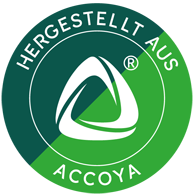Production
Certified wood sourcing
Wood from well managed sources is a natural, renewable solution for global environmental problems such as climate change, ecosystem destruction and landscape deterioration caused by increasing consumption. Besides forming a natural ecological habitat, forests are actually an important carbon sink by filtering CO2 out of the air and absorbing this in the biomass of the tree. In the case of responsible management, it is actually advised to harvest as much wood as sustainable for production of durable products such as furniture or construction products, which act as additional carbon stores while providing the forest the opportunity to regenerate and produce new biomass (acting as new carbon sink).
To produce Accoya, only abundantly available wood species are being used from certified, sustainably managed forests and plantations, including FSC® certified woods. All Accoya is compliant with the European Union Timber Regulation (EUTR) as well as the Lacey Act, and therefore responsible production is guaranteed.
End of Life
In the end of life phase Accoya® has no limits. Accoya® is a non toxic product and therefore fully biodegradable.
As a result, Accoya can be handled in the same manner as untreated wood at the end of its life (as stated in the company’s KOMO product certificate and further evidenced by SHR – Wood Research Foundation Netherlands), therefore fits perfectly in the Cradle to Cradle design philosophy for which it has been awarded the Gold certification as one of few products worldwide.
Accsys recommends that users of Accoya® wood adopt the “Ladder of Lansink” recycling strategy in the end of life phase. This model largely follows the guidelines of the Cradle to Cradle philosophy to close biological and technological cycles as much as possible and re-use materials in applications with the same or even higher added value (up-cycling). The model consists of the following possible waste management scenarios in which prevention is the preferred option and dumping the least:
- 1. Prevention – avoid waste
- Prevention – develop products that create no harmful waste (e.g. 100% biodegradable)
- Useful application through product re-use
- Useful application through material re-use
- Useful application through energy production (incineration)
- Remove: burn
- Remove: dumping / composting
